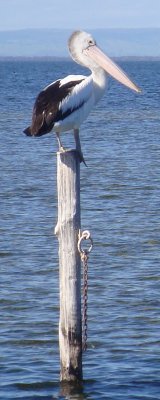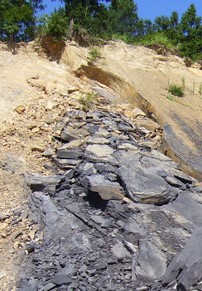 I have migrated this blog to http://blogs.uwa.edu.au/traces/ – please update your links and loyalties!
I have migrated this blog to http://blogs.uwa.edu.au/traces/ – please update your links and loyalties!
Thanks
Andrew
 I have migrated this blog to http://blogs.uwa.edu.au/traces/ – please update your links and loyalties!
I have migrated this blog to http://blogs.uwa.edu.au/traces/ – please update your links and loyalties!Thanks
Andrew
I found this journalling recently that I wrote some time ago – it’s a personal manifesto, of sorts, about my role as a university teacher.
 (from ScienceAlert)
(from ScienceAlert)
A fictional paper authored by Simpsons characters Edna Krabappel and Maggie Simpson, as well as someone called Kim Jong Fun (who we can only imagine is a slightly more approachable relative of North Korea’s leader) has just been accepted into two scientific journals.
Read the full story at http://www.sciencealert.com/two-scientific-journals-have-accepted-a-study-by-maggie-simpson-and-edna-krabappel, including a link to “Beall’s List” of Potential, possible, or probable predatory scholarly open-access publishers.
Perhaps it’s a pity that the journals have negligible credibility and nano-scale impact factors. Otherwise, they could make our jobs in academia so much easier.
 Two ways to receive open access to Nature group journals are being offered:
Two ways to receive open access to Nature group journals are being offered:
This has got to be a good thing for science in general and the sharing of high-impact scientific knowledge. In the context of this blog, the increased access to Nature Geoscience is excellent.
.
See the original full story at http://www.nature.com/press_releases/share-nature-content.html
 Today, Friday 5 December, is World Soil Day.
Today, Friday 5 December, is World Soil Day.
More information on this is available at website of the Food and Agriculture Organization of the United Nations (FAO).
(or, if you prefer, on the World Soil Day Facebook site)
This year, World Soil Day foreshadows the International Year of Soil in 2015. World Soil Day events are happening in Australia, the USA, New Zealand, and many other places (or here).
Soil science has made significant contributions to environmental geochemistry, in areas such as the physical chemistry of mineral surfaces, understanding of organic matter, and so on. Continue reading
 Plants that can take up unusually high concentrations of metals or other trace elements into their tissues, or hyperaccumulators, have been known for a few decades (see especially the work of R.R. Brooks and colleagues; e.g., Brooks et al., 1979). A new nickel hyperaccumulator, Rinorea niccolifera, has been described from the Philippines, and it can accumulate Ni concentrations in foliage as high as 18000 ppm, or 1.8%.
Plants that can take up unusually high concentrations of metals or other trace elements into their tissues, or hyperaccumulators, have been known for a few decades (see especially the work of R.R. Brooks and colleagues; e.g., Brooks et al., 1979). A new nickel hyperaccumulator, Rinorea niccolifera, has been described from the Philippines, and it can accumulate Ni concentrations in foliage as high as 18000 ppm, or 1.8%.
Hyperaccumulators are known for other elements as well, including cadmium and zinc (Brown et al. 1995) and, more recently, arsenic (Ma et al. 2001), and even gold (Anderson et al. 1999). Continue reading
 [Parts of an email exchange between a recent former student and myself about Thinking, Fast and Slow by Nobel Memorial Prize in Economics winner Daniel Kahneman (plus minor edits, mainly to add links and remove typos).]
[Parts of an email exchange between a recent former student and myself about Thinking, Fast and Slow by Nobel Memorial Prize in Economics winner Daniel Kahneman (plus minor edits, mainly to add links and remove typos).]
Kahneman’s book [Thinking, Fast and Slow] is very compelling. Great ideas that make perfect sense. I’m anticipating finding out about my own biases and trying to see where they might affect scientific thought – my own and others.
I’ve already encountered something analogous I think; the tension between what is “obvious” from expert knowledge, and what is more objectively demonstrated by formal logic or statistical analysis.In the instance I’m thinking of, the expertise (as Kahneman points out) is the consequence of lots of practice (maybe even the “magic” 10,000 hours (c.f. Malcolm Gladwell’s Outliers), which most professionals would achieve in their core expertise). However in the context of research, we need to back up our expert hunches with more rigorous, and hopefully objective, analysis.
The analogy that I imagined was related to one raised by Kahneman – the physician who makes an accurate on-the-spot diagnosis. Of course, that would be followed up with clinical testing, in the same way as a scientist follows up hunches about their data with statistical testing, extra measurements, etc. Anyway, enough rambling on about that!
I will have to read the conclusion to ‘Outliers’ again; I had forgotten about the idea of creating opportunities. It does fit in with (my perhaps simplistic) mantra about leadership, that ‘Good leadership is about helping others to succeed‘.
Congratulations to Amber Balfour-Cunningham and Charlotte Patrick from the University of Western Australia, who shared the Paul Turner Scholarship based on their work on the Anvil Way Constructed Wetland environment in the third-year unit Environmental Assessment ENVT3361.
Their win is also reported
 We’ve recently had the following article accepted for publication:
We’ve recently had the following article accepted for publication:
Peng, B., Rate, A.W., Song, Z., Yu, C., Tang, X., Xie, S., Tu, X., Tan, C., 2014. Geochemistry of major and trace elements and Pb-Sr isotopes of a weathering profile developed on the Lower Cambrian black shales in central Hunan, China. Applied Geochemistry, Online 20 October 2014. doi:10.1016/j.apgeochem.2014.09.007
This paper reports a geochemical study on the major and trace elements and Pb-Sr isotopes of a weathering profile developed in the Lower Cambrian black shales in central Hunan (China). Six weathering horizons were identified and sampled vertically throughout the profile. Continue reading
 In the previous post,’What’s trending in environmental geochemistry‘, I identified ‘hot’ topics from the number of times a keyword or index term was observed in the 100 articles having the most citations during 2010-2014. Of course this isn’t the only way of doing it, and there were some obvious anomalies and/or omissions in the lists from the last post.
In the previous post,’What’s trending in environmental geochemistry‘, I identified ‘hot’ topics from the number of times a keyword or index term was observed in the 100 articles having the most citations during 2010-2014. Of course this isn’t the only way of doing it, and there were some obvious anomalies and/or omissions in the lists from the last post.
The topics I’m thinking of are: